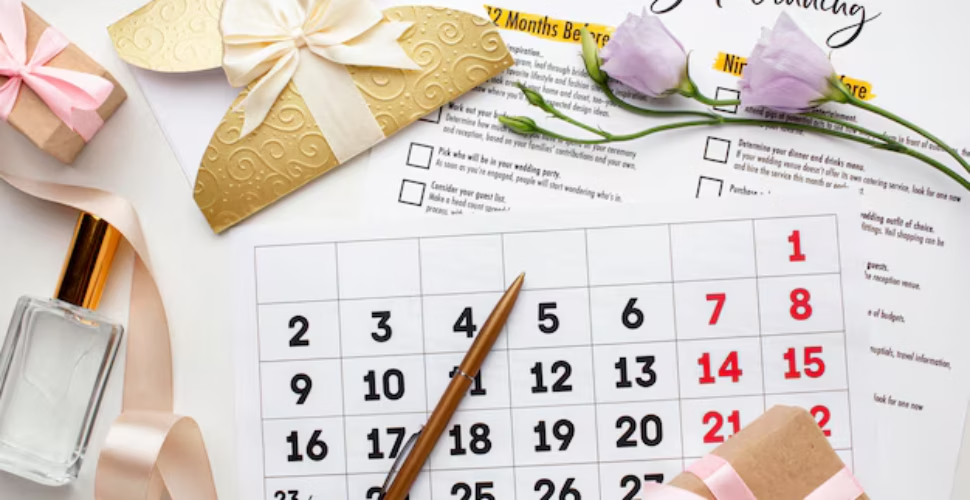Let’s face it: event planning is a lot like assembling Ikea furniture. You’ve got the instructions (or at least you think you do), a box full of parts, and a vague hope that nothing will be left over. This guide explains the steps so that even if you’re not an experienced party planner, you can learn how to plan events that go smoothly.
Step One: Define Objectives
Before diving headfirst into event organizing, it’s essential that you establish clear goals and objectives. What specifically do you want to achieve here? Is the celebration for an anniversary, a product launch, or a corporate retreat that might double as an excuse for free food? Set clear objectives.
Write down your goals. This isn’t just busy work—it’s like setting a destination on your GPS. Without setting clear objectives for each event decision, from venue selection to playlist creation, your event could end up falling flat on its face.
Step Two: Create a Realistic Budget
Money matters. A realistic budget is key to event planning success; take an accurate inventory of expenses such as venue rental, catering fees, decor fees and any extra charges that might occur unexpectedly.
Your budget should serve as your friend who reminds you to save money; though at times this might seem bothersome, its purpose will become apparent when unexpected costs crop up. A general guideline for unexpected costs would be adding 10-15% extra in case unexpected charges pop up. After all, even the best plans can’t predict that one vendor who suddenly decides their fee is due yesterday.
Step Three: Select the Ideal Time and Location
It’s time to decide on where and when now that you have your budget and goals set. Choosing a date may seem easy until you understand that calendars are like Tetris pieces; if one is set, the others may need to move. Look for any conflicts with holidays, neighborhood gatherings, or that much-anticipated cousin’s wedding.
Choosing the appropriate location is just as important. Choose a location that complements the size and theme of your event. Think about things like parking, accessibility, and whether the location has any additional costs that would break the bank.
Step Four: Plan Details and Establish a Timeline
Now it is time for some real fun—planning the details! Breaking your event up into small, manageable tasks is essential to keeping events on schedule without spiraling out of control. Create an all-encompassing checklist from booking vendors all the way to setting up decorations on location.
Establish a timeline for these tasks. Planning large events requires starting three to six months in advance; smaller events might only need a couple of weeks of prep. Think of this timeline as your personal roadmap: any deviation may result in ‘Event Fiasco-Ville.’
Step Five: Book Vendors and Supplies
Vendors are unsung heroes when it comes to event planning. From hiring caterers who won’t serve a mystery meat casserole, photographers who capture every important moment, or DJs who understand that your grandma’s favorite tune isn’t ‘The Macarena’ (again), booking vendors early is key to creating a seamless event experience for guests and attendees.
Research carefully, check reviews and don’t be shy about asking difficult questions. Make sure all aspects are secured through written contracts to prevent ‘surprise’ fees later. Signing a contract as the prenup of your event—perhaps not romantic, but definitely necessary in avoiding future headaches!
Step Six: Publicize Your Event and Send Invitations
Now that your idea is coming together, it’s time to spread the news. Your message should be in line with the event’s tone, whether you’re using e-invites or more conventional paper invitations. While a backyard party might only need a polite text message, a major gala requires beautifully designed invitations.
Use email, social media, and regular old-fashioned word-of-mouth to advertise your event. The difference between a crowded house and an empty room can be determined by how well an event is promoted. Remember that your invitation is the first impression when it comes to organizing events that people will really attend. Indeed, it ought to be as incisive as your finest one-liner.
Extra Tips for Organizing Events on a Budget
Events don’t need to break the bank! Here are a few extra suggestions on planning an event without emptying out your savings account:
- DIY Decor: Sometimes just a touch of creativity goes a long way in adding personalization and flair to an event. Put your artistic side to use by designing custom decor that embodies its character.
- Support Local Vendors: Local businesses often offer more flexible prices and personalized customer care compared to large chain vendors.
- Go Digital: Reduce printing costs by sending digital invitations and using social media for promotion of the event.
Remember, creativity often blossoms under constraints, and sometimes necessity breeds the most memorable experiences.
Accepting the Unexpected
No matter how well organized, unexpected events will always come your way. Welcome these unplanned twists as opportunities to shine a spotlight on yourself; often these small mishaps make an event truly remarkable! When something does go awry, take it in stride and trust that your ability to adapt will prove itself; often, our most memorable memories come from moments of unexpected chaos!
Flexibility is key. Should the unexpected arise, just laugh it off and keep moving forward—your guests will thank you, while you’ll take away stories to tell (and a few war scars that prove you survived).
Your Roadmap to Successful Event Planning
To wrap it all up, here’s a quick recap of your journey to successful event planning:
- Set Clear Goals: Know what you want to achieve.
- Create a Realistic Budget: Track every penny, and don’t forget the contingency fund.
- Choose the Date and Venue: Pick a time and place that aligns with your vision.
- Plan the Details and Timeline: Break the process into manageable tasks.
- Book Vendors: Secure reliable partners who understand your vision.
- Send Invitations and Promote: Make sure your guests know when and where to be.
- Manage the Day: Keep cool under pressure and handle last-minute surprises.
- Evaluate and Learn: Review what worked and what didn’t for future improvement.
Following these steps will not only help you organize event details effectively but also ensure that your event is as enjoyable to host as it is to attend. Every great event starts with a plan, a sprinkle of creativity, and the confidence to tackle unexpected challenges with a wry smile.
Final Thoughts
Before diving in and starting to plan, consider giving your event an exceptional edge with VUE17 in St. Louis as your venue of choice. Boasting state-of-the-art facilities and breathtaking city views, VUE17’s flexible space makes for successful event planning of corporate seminars, product launches, or intimate celebrations alike! VUE17 sets an impressive stage to make any occasion unique.




